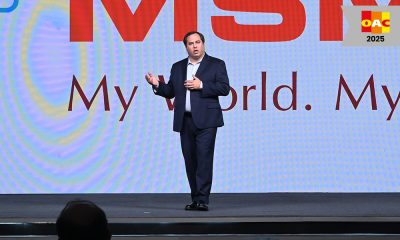Digital Network
Retail media is revolutionising DOOH advertising
Laetitia Lim, CEO of Quividi, speaks about integration of retail media and DOOH at the WOO World Congress in Hong Kong

In a dynamic and rapidly evolving digital landscape, retail media is emerging as a game-changer for digital out-of-home (DOOH) advertising. At the WOO World Congress in Hong Kong, Laetitia Lim, CEO of Quividi, delivered an insightful presentation on “How Retail Media Drives a New Paradigm for DOOH”. She delved into the ways in which retail media is leveraging first-party data to create highly differentiated and effective media networks.
The power of first-party data
At the heart of this paradigm shift is the strategic use of first-party data. Unlike third-party data, which is often generic and less reliable, first-party data is collected directly from customers and thus provides unparalleled insights into consumer behaviour. Retailers like Walmart and Kroger have invested significant resources in consolidating and refining their vast stores of loyalty and point-of-sale (POS) data. This data consolidation enables them to offer brands a comprehensive media solution that spans the entire marketing funnel, from awareness and consideration to purchase.
Retail Media as a full-funnel solution
Laetitia emphasised the versatility of retail media as a full-funnel advertising solution. Traditionally, media at the point of purchase has focused on driving sales transactions, a bottom-of-the-funnel activity. However, retail media’s capabilities extend far beyond this. By strategically placing screens throughout the shopping journey, from entry points and aisles to checkout areas, retailers can engage consumers at multiple touchpoints. This holistic approach allows brands to build awareness, drive consideration, and ultimately influence purchase decisions in a seamless, integrated manner.
Digital mindset and ecosystem integration
A key enabler of retail media’s success is the adoption of a digital-first mindset and integration with a robust ecosystem of partners. Retail media practitioners leverage data-centric strategies, continuous optimisation, and transparent measurement frameworks, as promoted by industry bodies like the Interactive Advertising Bureau (IAB). This digital mindset ensures that retail media campaigns are not only effective but also measurable, providing brands with clear insights into their return on investment.
The role of first-party audience data
First-party audience data is another critical component driving the effectiveness of retail media networks. This data includes detailed metrics such as impressions, reach, and frequency at the screen level. Retailers can enrich this data with third-party sources, such as mobile data and seasonal trends, to create a comprehensive view of their audience. This enriched data enables precise targeting and personalisation, ensuring that the right message reaches the right consumer at the right time.
Case Study: 7-Eleven and Cresco
Laetitia highlighted the successful collaboration between Quividi and 7-Eleven in Taiwan as a prime example of the power of first-party data in retail media. Over a decade, 7-Eleven has deployed and monetised one of the largest in-store media networks in Asia, featuring 16,000 screens across 7,000 stores. With loyalty data from 15 million customers, 7-Eleven can offer highly targeted advertising, creating a compelling proposition for both endemic and non-endemic brands. The result is a robust media network that drives significant engagement and sales.
Innovative monetization models
Retail media also introduces innovative monetisation models, such as cost-per-view, which guarantee brands that they pay only when content is actively viewed by consumers. This approach enhances accountability and ensures that advertising budgets are spent effectively, maximising ROI.
Constant optimisation through AI
Finally, the integration of artificial intelligence (AI) and analytics plays a crucial role in the continuous optimisation of retail media strategies. AI helps retailers analyse vast datasets, identify trends, and adjust campaigns in real-time, ensuring that media content remains relevant and engaging.
Retail media is undoubtedly driving a new paradigm in DOOH advertising, offering a unique blend of data-driven insights, full-funnel capabilities, and digital-first strategies. As hundreds of thousands of screens compete for media market share, the opportunity for brands and retailers is immense. By harnessing the power of first-party data and leveraging advanced technologies, retail media is set to redefine the future of advertising, delivering superior marketing experiences for all stakeholders.
In summary, Laetitia Lim’s presentation at the WOO conference underscored the transformative potential of retail media in the DOOH space. As the industry continues to evolve, those who embrace these new paradigms will be well-positioned to thrive in the competitive landscape of digital advertising.
-

 Creative Concepts
Creative ConceptsDisney’s Percy Jackson season 2 makes splash with 4D billboard activation
-

 Creative Concepts
Creative ConceptsNMACC’s snowfall billboard promotes The Nutcracker on Ice
-

 Markets in Focus
Markets in FocusPwC forecasts India’s OOH revenue to near $800M, powered by DOOH and measurement
-

 Campaigns
CampaignsContinental Coffee Speciale unleashes sensory OOH blitz in Mumbai



















